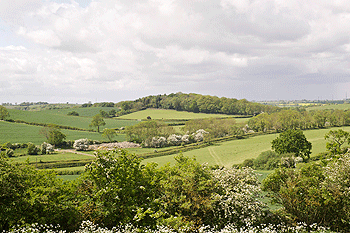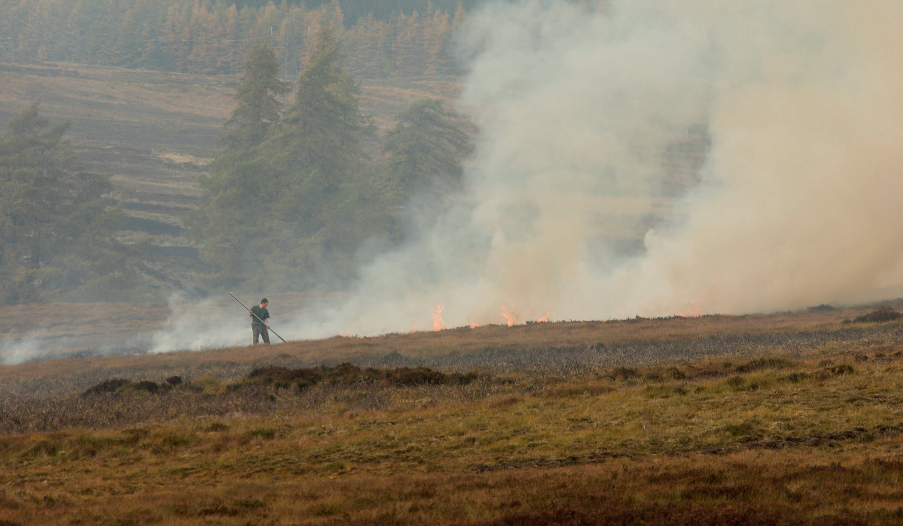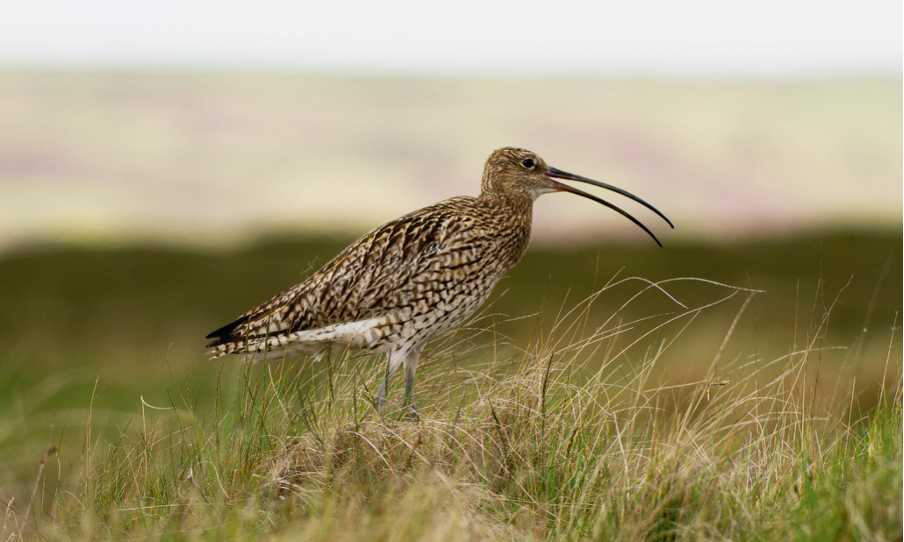News
Hunting close to the hedge
<strong>Unknown to many, local hunts often carry out invaluable conservation work. Charlotte Lycett Green uncovers how they benefit our humble hedgerows
Would you like to appear on our site? We offer sponsored articles and advertising to put you in front of our readers. Find out more.
Snaffles called it The Finest View in Europe: the perspective is from between the pricked ears of a grey hunter as it approaches a stake-and-bound hedge with hounds running on across the rolling Leicestershire grass. It?s a painting that captures perfectly what it is like to hunt in the Shires. The stake-and-bound hedge in the foreground of his picture is significant too; it is typical of hedges found in the Midlands. It?s possible to identify other counties from their hedges as well ? tall banks topped with thorn and holly in parts of Devon and Somerset, wide banks topped with square beech hedge on Exmoor and towering knife-edge banks in Cornwall.
In Leicestershire, hedges are cut in the Midland style, the aim of which is to provide a bullock-proof fence. Planted with a mixture of hedgerow plants including whitethorn, hazel, dog rose, sometimes a wild privet, field maple and ash or oak trees, they are stockproof, provide shelter and boundaries, and act as wildlife corridors for flora and fauna. They?ve existed since enclosure began, and though farmers have been criticised in the past for ripping out hedges, the current grant system has done much to encourage traditional hedge management. Though many people will be unaware of it, local hunts have also assisted the natural balance of the countryside through the conservation work that they carry out and support.
Though there is a residue of ancient forests in the area, such as Leighfield Forest in Rutland, Rockingham Forest, Grimsthorpe ancient oak forest and Croxton Park in the Belvoir country, many of the small coverts that dot the Leicestershire landscape were originally planted as foxholding coverts for hunting. Look at an OS map and you will see that many of the woods are named as coverts, which tells much of their history. Several are owned and maintained by the Quorn, Cottesmore, Belvoir and Fernie hunts, and some have become legendary in hunting history for being the starting point of famous hunts. Recently, the Quorn Hunt has planted a new covert near the Kennels, called Farrins, in memory of long-serving huntsman Michael Farrin, so the tradition remains today. Ranksborough, a hunt-owned covert in the Cottesmore country, was replanted recently and now provides a wildlife haven away from the general public.
Hedge-laying competitions
The most important input into the local area, in terms of conservation, is the hedge-laying competitions that the hunts hold every year. The Cottesmore Hedge-Cutting Society has been in existence since 1925, when the hunt took over the ploughing and hedge-cutting competitions that had been run by the Rutland Agricultural Society. In 1930, the competition attracted 90 hedge cutters and more than 31 miles of hedges were laid that winter.
The competition was abandoned during the war and the first one-day contest was held in 1948. In 1973 the one-day format was shelved and the on-farm event began. Today, competitors cut hedges on different farms during winter and judging takes place at the end of April.
?The expenses of running the one-day competition were prohibitive,? explained William Cross, honorary secretary of the Society. ?The benefit of the on-farm format is that hedges are laid all round the country. Each section of hedge must be three chain in length (the equivalent of three cricket wickets ? one chain is 22 yards). This year, we judged 36 lengths of hedge and drove more than 130 miles to view them. In the summer we have a prize-giving party to which every landowner and cutter is invited. It?s good PR for the hunt and it encourages people to lay hedges in order to extend their useable life. It also benefits woodlands as we encourage cutters to use traditional hazel stakes and binders, so the woodland areas are rejuvenated as well.?
Richard Wright, president of the Society, farms a large suckler herd of South Devons near Tilton-on-the-hill, in Leicestershire. The farm was part of the Keythorpe Estate, and the site of the estate?s second shoot. There is still a pheasant shoot today and the Cottesmore Hunt are on Richard?s ground once every three weeks in the hunting season.
A chain a day
In mid-May, the month of promise, the farm and stock looked magnificent. New growth sprouted from every corner, wild garlic carpeted the ancient woodland and the gentle rolling pasture made it a truly English scene. Richard very kindly took me out to have a look at the farm to see how he manages the hedges and woodlands. First, we looked at a length of hedge beside a shooting covert that had been laid over the winter. ?This is a maiden hedge that was replanted about eight or 10 years ago,? he said. ?The theory is that you cut it every 10 or so years, let it grow up and then cut it again after another 10 years. It keeps it in a healthy regenerated stockproof state. It?s also one of the nicest shooting coverts on the farm. The hedge provides a good flushing point as well as a windbreak at ground level and lets plenty of light into the wood for warmth.
?When funds allow, the hunt supplies stakes and binders towards the hedge- cutting, but we cut most of them ourselves. Coppicing the ancient woodland keeps the rotation going and the woodland healthy.?
The saying goes that if a man could lay a chain in a day, then he?d done a good day?s work. Of course, man hours mean expense and laying a hedge now costs between £8 and £10 per metre, so it?s easy to see why many people resort to using machinery to maintain their hedges. This, however, does nothing to extend the life of the hedge ? holes quickly appear in the bottoms as height overtakes spread and soon the fence is weak, fails to provide shelter and is no longer stockproof.
We drove to the ancient woodland, of which there are two areas on the farm ? one of 90 acres and one of 10 acres. The woodland is mainly ash, oak and field maple with an understorey of hazel, a bit of Midland thorn, some dogwood and patches of blackthorn. It?s been woodland since the last Ice Age and coppiced for thousands of years, as demonstrated by a huge maple stool that has spread wide enough that a Mini could be parked inside it. A hard track provides access, the rides were newly mown and the sun shone brightly through the canopy letting in warmth and light. ?Coppicing gives warm patches in the undercover and animals enjoy lying in the sun, like us,? said Richard. ?If you can get the rotation going in the woods so that a little bit is coppiced each year, it also encourages different flora that would otherwise lie dormant for 50 years. This wood is full of bluebells, red campion and large patches of wild garlic.?
Stakes and binders, which are like a wooden rope, are traditionally cut from hazel. They?re extremely strong, tough enough to bring a horse and rider down, and strengthen the hedge in its fi rst few years of growth. Richard pointed out some hazel that was about the right size for cutting for this purpose. ?If we don?t sell these for hedge cutting, they get to the stage where they?re too big for anything, so we want the cutters to use the hazel from these woods in order to keep the rotation going. Unfortunately, it?s possible to buy the offcuts of sawn stakes cheaper than we can cut them out, and willow binders can be bought from biofuel companies. They harvest them with a machine and bundle them up, whereas we cut them by hand.?
?Traditional hedge cutting is expensive because it takes time and manpower,? said William Cross. ?It takes time to get into the woodlands to cut stakes and binders, trim them, tie them in bundles, load them up and so on. It?s a bitlike
a bale of straw ? every time you touch it between field and stockyard it costs you money.
?The Stewardship Schemes have helped to encourage people to undertake the work, and when those funds are available it?s important that farmers and landowners make use of them. In the past local councils, even the local mine,
have provided grants to encourage hedge cutting and tree planting, and the hunt plays a big part in keeping traditional hedge cutting going ? we?re lucky to have a lot of young men competing, some of whom have only been cutting for the past few years, as it engenders a competitive spirit and keeps the whole thing going. The Cottesmore Hedge-Cutting Society also sponsors a hedge-cutting course each year, run by the Rutland Training Group. We had 22 trainees listing their interest the last time it was run.?
Hedge-cutting competitions are undeniably good for strengthening relations between the hunt, landowners and local shoots, without whose permission it would be impossible to carry on. Though funds are universally tight at the moment, in the past, hunts would subsidise stakes and binders and also put gates in where farmers needed them. Many of the hedgesjudged in the Cottesmore Hunt competition are around shooting coverts, so it is heartening to see the two sports working together for the greater good of the countryside. Miles of hedges are cut in the traditional way each winter thanks to these hunt competitions and there is no doubt that the countryside would be the poorer were it not for these contests and the hedge cutters who compete in them.
Visit www.cottesmorehunt.info for more information about the Cottesmore Hedge Cutting Society.
Related articles
News
Hit pause on flawed rollout, urges BASC
BASC calls for delay to the Scottish government’s muirburn licensing scheme amid concerns from practitioners over the code’s workability.
By Time Well Spent
News
More power to police for tackling poachers
Following countryside organisations’ campaigning, penalties for illegal coursing have increased, with average fines up from £360 to £6,000
By Time Well Spent
Manage Consent
To provide the best experiences, we use technologies like cookies to store and/or access device information. Consenting to these technologies will allow us to process data such as browsing behavior or unique IDs on this site. Not consenting or withdrawing consent, may adversely affect certain features and functions.
Functional Always active
The technical storage or access is strictly necessary for the legitimate purpose of enabling the use of a specific service explicitly requested by the subscriber or user, or for the sole purpose of carrying out the transmission of a communication over an electronic communications network.
Preferences
The technical storage or access is necessary for the legitimate purpose of storing preferences that are not requested by the subscriber or user.
Statistics
The technical storage or access that is used exclusively for statistical purposes.
The technical storage or access that is used exclusively for anonymous statistical purposes. Without a subpoena, voluntary compliance on the part of your Internet Service Provider, or additional records from a third party, information stored or retrieved for this purpose alone cannot usually be used to identify you.
Marketing
The technical storage or access is required to create user profiles to send advertising, or to track the user on a website or across several websites for similar marketing purposes.



